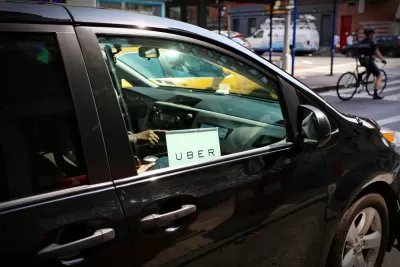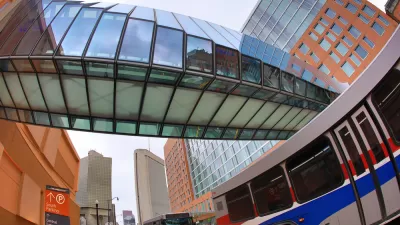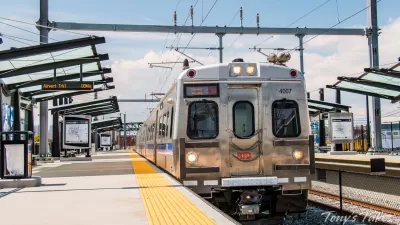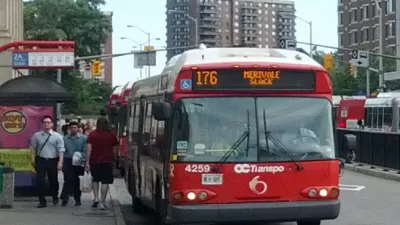Innisfil, Ontario, decided to use Uber instead of starting bus service. The program took off but so have the costs, and now cutbacks need to be made.

Laura Bliss reports on the plan in Innisfil, Ontario, a town north of Toronto, to use Uber in place of public transit. Innisfil’s population had grown in recent years, and local officials considered implementing fixed-route bus service, but the costs would have been high.
Subsidized Uber rides looked like a better option and, starting in 2017, the town started offering $3 to $5 flat fares to particular destinations and $5 fares to the rest of the area. The program has been a success, with 86,000 rides logged in 2018. But the model means costs have gone up because Uber vehicles do not have the capacity of buses.
"Only so many passengers can fit in the backseat of an Uber, and the ride-hailing company, not the town, is pocketing most of the revenue. With per-capita costs essentially fixed, the town is forced to hike rates and cap trips as adoption grows," writes Bliss. Some Innisfil residents who have come to depend on the service feel that the changes are unfair, especially because no bus alternative is available.
Cities have had various motivations for incorporating ridesharing into their public transit systems. And the outcomes have varied, with some places seeing low ridership and others, like Innisfil, struggling with rising costs. "As cities around the world turn to Uber, Lyft, and other apps as a quick fix for mobility service gaps, what’s now happening in Innisfil may be a good example of the risks," notes Bliss.
FULL STORY: ‘Uber Was Supposed To Be Our Public Transit’

Planetizen Federal Action Tracker
A weekly monitor of how Trump’s orders and actions are impacting planners and planning in America.

Maui's Vacation Rental Debate Turns Ugly
Verbal attacks, misinformation campaigns and fistfights plague a high-stakes debate to convert thousands of vacation rentals into long-term housing.

San Francisco Suspends Traffic Calming Amidst Record Deaths
Citing “a challenging fiscal landscape,” the city will cease the program on the heels of 42 traffic deaths, including 24 pedestrians.

Amtrak Rolls Out New Orleans to Alabama “Mardi Gras” Train
The new service will operate morning and evening departures between Mobile and New Orleans.

The Subversive Car-Free Guide to Trump's Great American Road Trip
Car-free ways to access Chicagoland’s best tourist attractions.

San Antonio and Austin are Fusing Into one Massive Megaregion
The region spanning the two central Texas cities is growing fast, posing challenges for local infrastructure and water supplies.
Urban Design for Planners 1: Software Tools
This six-course series explores essential urban design concepts using open source software and equips planners with the tools they need to participate fully in the urban design process.
Planning for Universal Design
Learn the tools for implementing Universal Design in planning regulations.
Heyer Gruel & Associates PA
JM Goldson LLC
Custer County Colorado
City of Camden Redevelopment Agency
City of Astoria
Transportation Research & Education Center (TREC) at Portland State University
Jefferson Parish Government
Camden Redevelopment Agency
City of Claremont





























